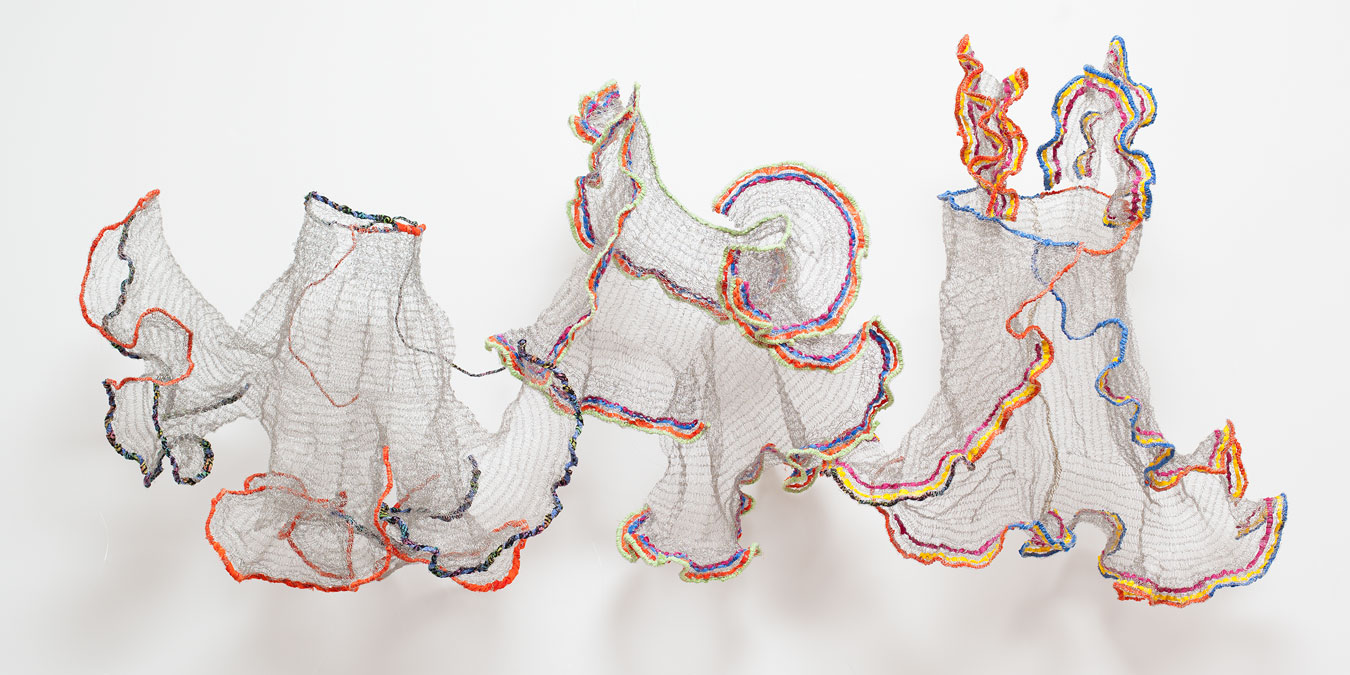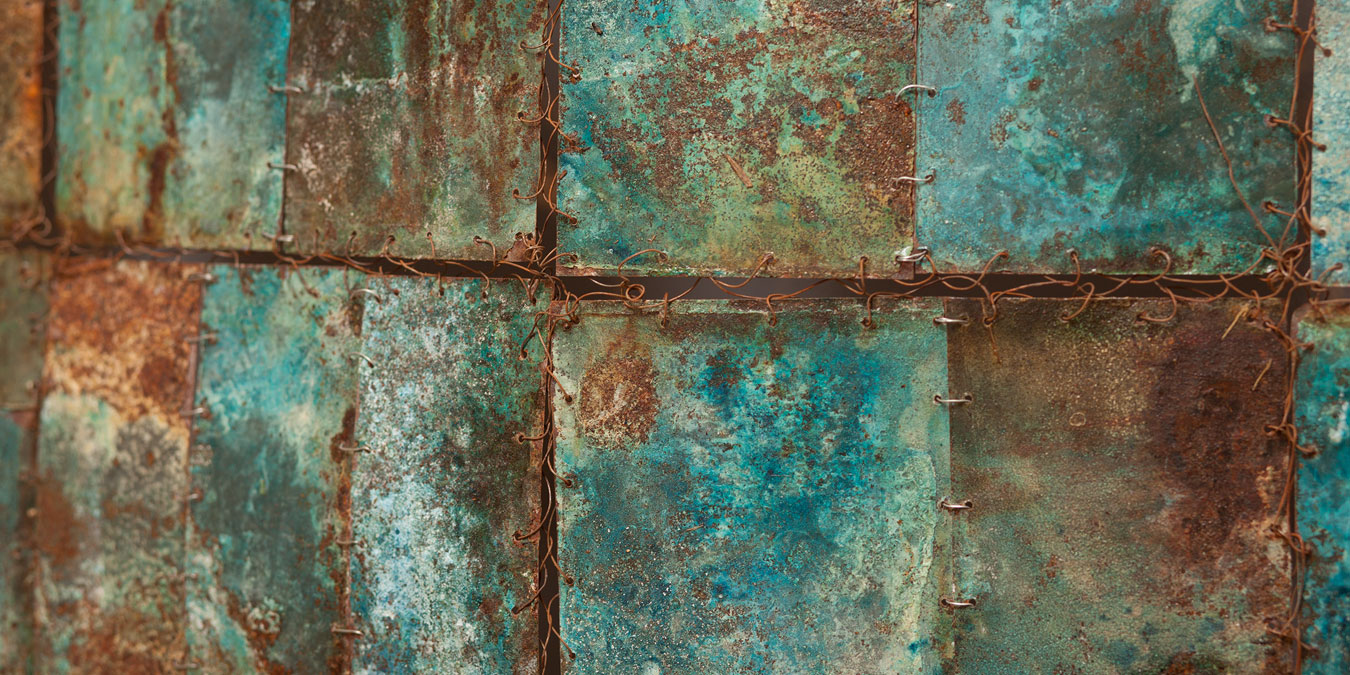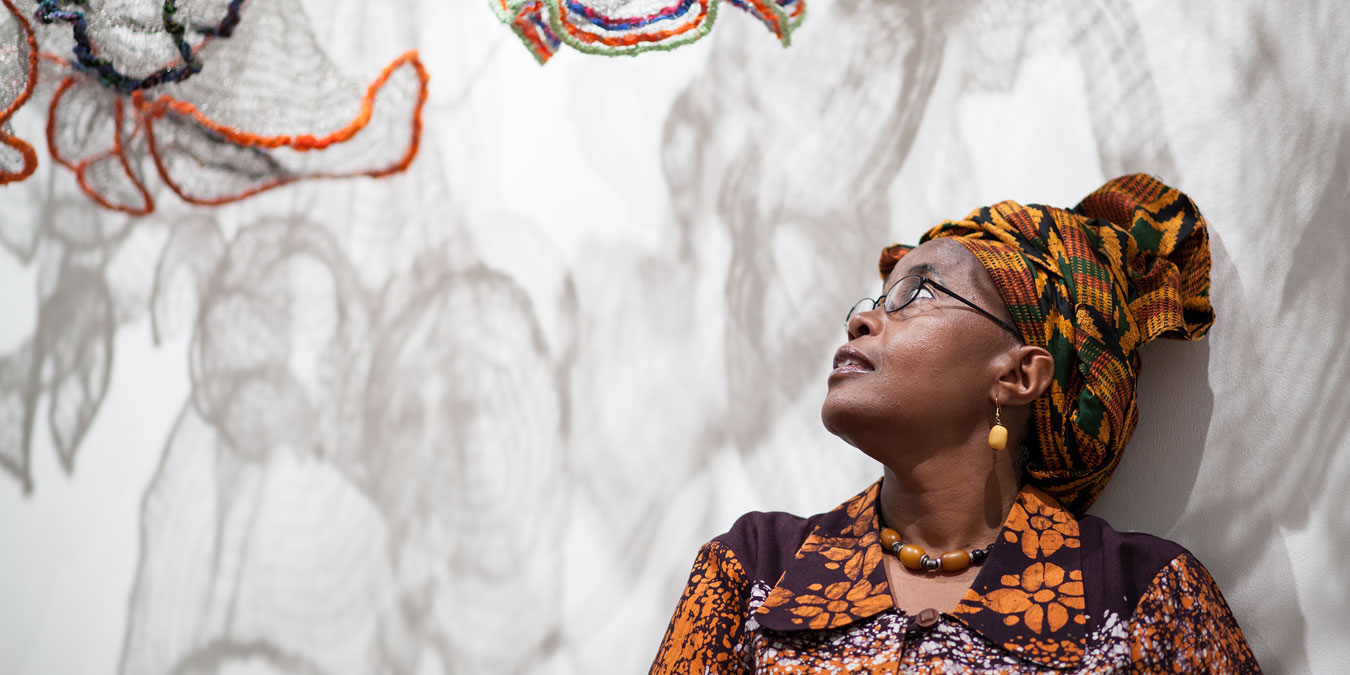Naomi Wanjiku Gakunga: ITUIKA - TRANSFORMATION
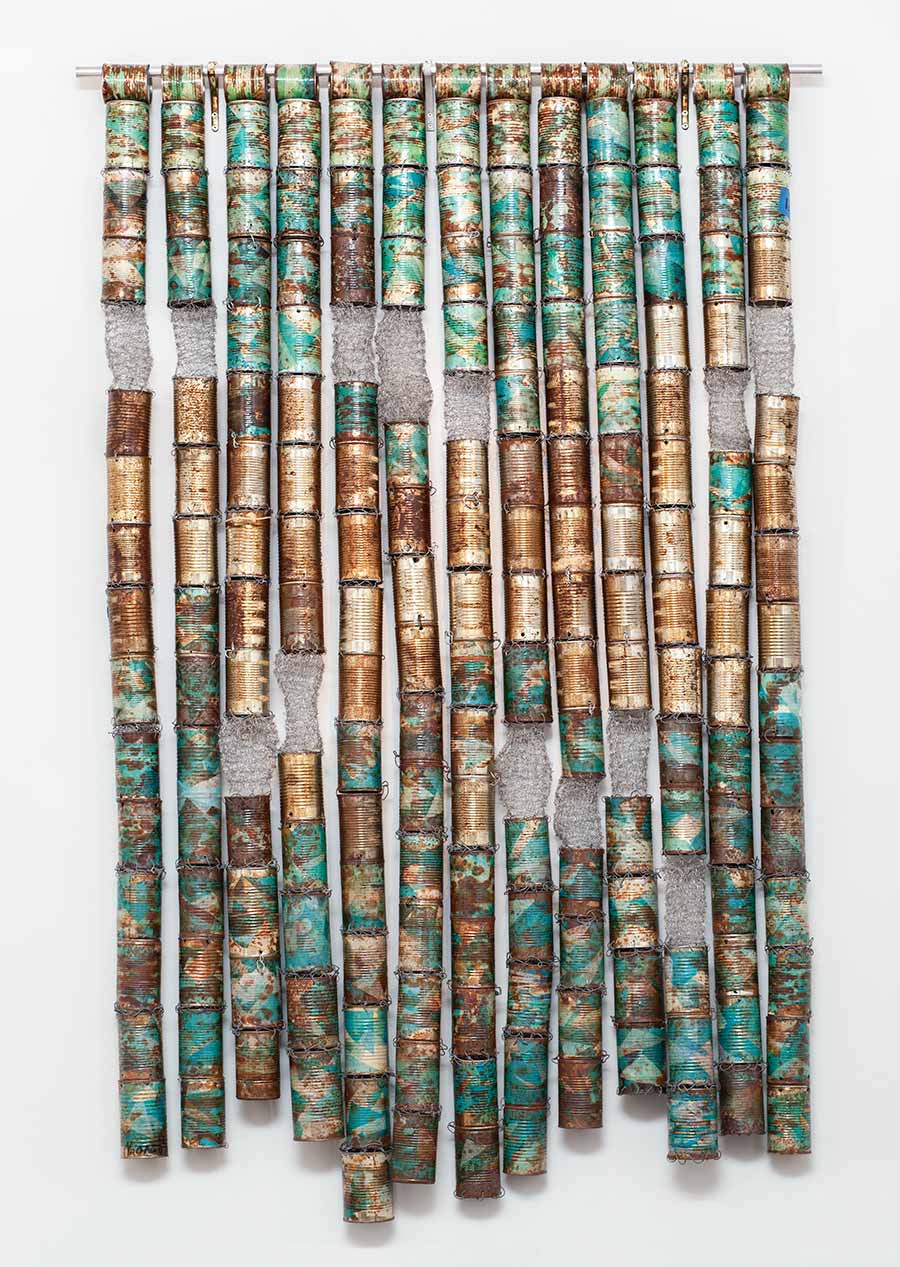
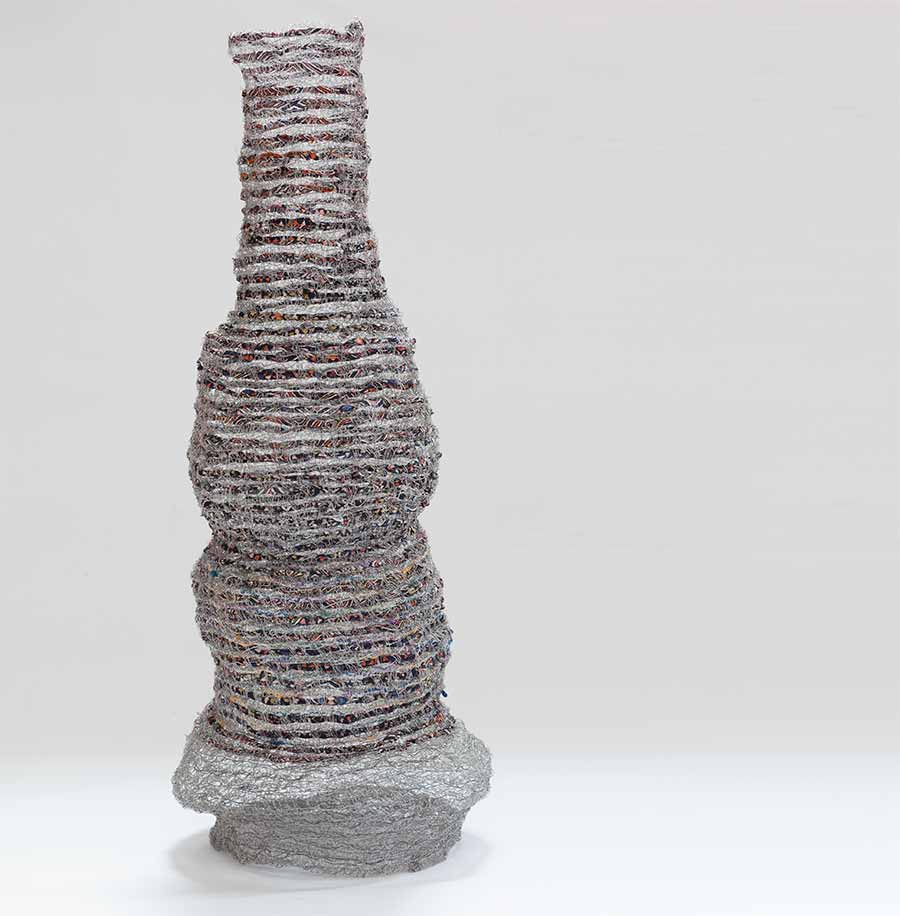
October Gallery is pleased to present a new exhibition of works by Naomi Wanjiku Gakunga. This will be her first solo exhibition in London.
Born in 1960, Naomi Wanjiku Gakunga grew up among the Kikuyu people of Kenya. She first studied art at the University of Nairobi, Kenya before continuing her studies at UCLA, USA. She now lives and works in San Antonio, Texas. Gakunga has displayed works in numerous exhibitions in the USA, France, Brazil and Poland.
The exhibited works are predominantly wall-hanging sculptures ingeniously created from tin cans, steel wire and oxidised sheet metal forms. While the techniques Gakunga uses are common to the fibre arts across many traditions, her chosen materials are not. Corroded sheet metal, rusted tin cans and stainless steel wire all follow the concept of Jua Kali, a Swahili expression literally meaning ‘under the hot sun’ that refers to the idea of chance effects created out of things which have been discarded. Here, nothing goes to waste and waste materials become the medium for a wholly new focus of attention. This highly developed approach to repurposing discarded objects echoes the sophisticated creations of artists such as Nnenna Okore.
Galvanised sheet metal, known in Swahili as mabati, is ubiquitous in Kenya. Used mainly for roofing materials and walls, this sheet metal is particularly associated with the Mabati Women Groups and their empowering community housing projects of the ‘60s. Gakunga observed the success of their efforts, the harvesting of water from the new roofs and the consequent ageing of the material itself. Mirroring these weathering effects in her own artistic process, she deliberately saturates rolls of sheet metal in water, a process that oxidises the submerged surfaces, occasionally adding dyes to create different colours and other more complex effects. Finally, Gakunga selects, cuts and links the resultant pieces to assemble her wall-hangings. These striking sculptures reflect, at one and the same time, both the mabati’s enduring functionality and its fragility; the delicate transformations etched in metal by the corrosive effects of water, chance and time emphasising an ethereal, transient beauty.
Another significant material found in these works is fibre or string. Gakunga’s grandmother was a major influence on her, as the traditional Kikuyu women would weave baskets from fibre extracted from the makongo plant. Gakunga continues to use string and ribbons as primary materials within her work, acknowledging the contemporary in her usage of fine grade metal wires used to sew and crochet her works into organic wholes. Creating pieces that mimic the swaying movements of dancers’ dresses and that exude a light, airy quality, Gakunga notes, ‘String is entwined in the life of a Kikuyu woman, from the moment she is born until she departs.’
This delicate work pays tribute to these succeeding generations of women. Gakunga’s choice of materials and the processes of stitching, crocheting and weaving proudly maintain traditions which are here transformed into the field of contemporary art. Using these various metaphors to acknowledge her heritage, Gakunga’s sculptures explore the connections between the past and the present, between tradition and modernity and between the older generations and their contemporary descendants. The effect is both playful and provocative. It is also quite positively transformative.



